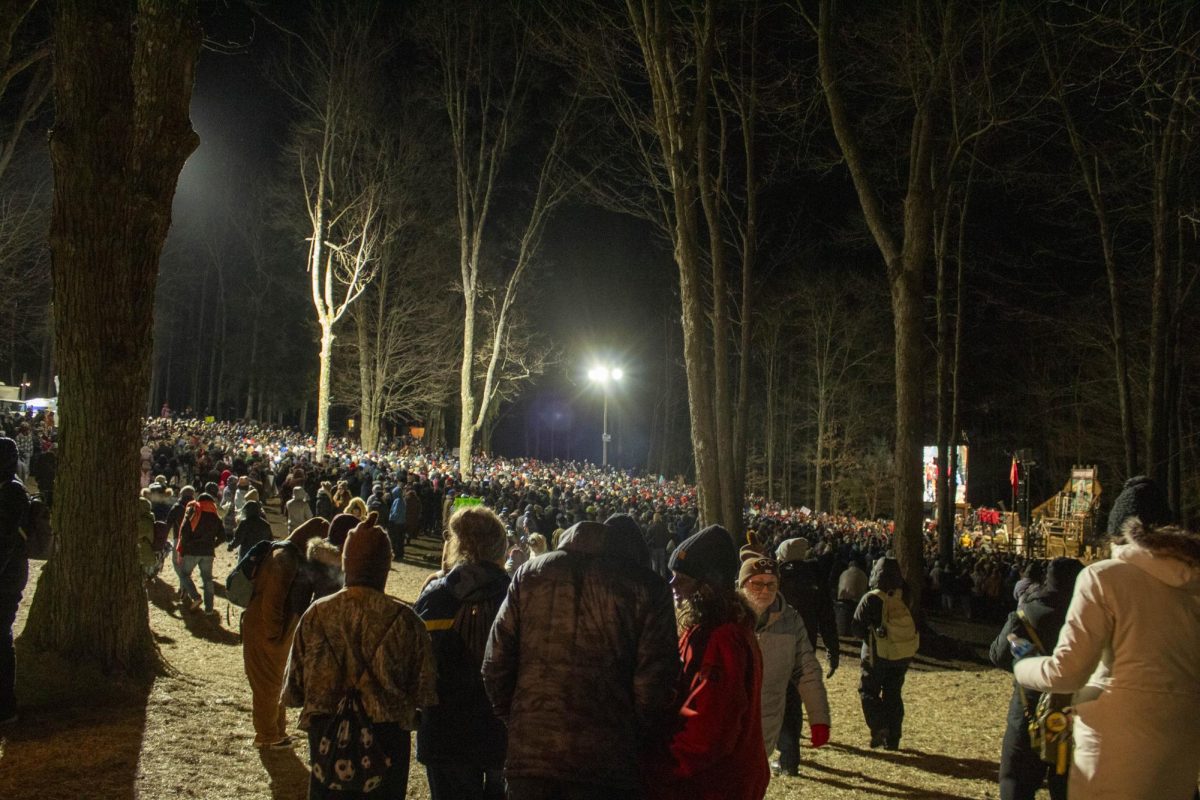Tens of thousands of people gather at Gobbler’s Knob in Punxsutawney, Pennsylvania to see the legendary groundhog and meteorologist Punxsutawney Phil every Feb. 2.
Phil’s shadow answers the biggest question of the season. If he sees his shadow, he predicts that winter will persist for another six weeks and then returns to the warmth of his burrow. If not, he celebrates an early spring ahead with the bustling crowd gathered there.
In 2024, Phil did not see his shadow for the first time in four years, calling for an early spring. Following a treacherous winter in Pittsburgh this year, Phil has predicted another six weeks of cold weather.
For many attendees, including a number of Chatham students, the appeal of Groundhog Day comes not with the weather prediction but with the lore behind it. In recent years, the holiday has drawn in a new generation, gaining popularity on social media platforms like TikTok. So, what has caused so many people to ditch the weather app once a year and put their faith in a furry friend?
Groundhog Day, along with Halloween, has its roots in a string of pre-Christian festivals that were celebrated by European tribes between the winter solstice and the spring equinox. This ancient Christian holiday, originally named Candlemas in the fourth century, developed a special focus on weather as a way to look ahead to the next season. On Candlemas, Christians would take their candles to churches to be blessed to bring protection to their home for the rest of winter.
The star of the show, the groundhog, has its roots in Germanic tradition. A common German folk belief was that the weather could be predicted by a badger. In fact, Germans used to refer to Candlemas as “Badger Day.” When German-speaking immigrants arrived in America, the badger was replaced by the similarly hibernating groundhog. Badger Day was likely founded between 1727 and 1775, around the time that most Pennsylvania Dutch immigration happened. The first trace of a groundhog being used for the practice over a badger was in 1840.
Groundhog Day is now observed in many parts of the United States and Canada but remains the most popular among the Pennsylvania Dutch.
Pennsylvania Dutch have been celebrating Groundhog Day at ceremonies held in “Groundhog Lodges” since the 1930s, where participants take an oath of allegiance to the groundhog and proceed with the typical Groundhog Day festivities of predicting the upcoming season. In these ceremonies, the participants are typically required to speak only in Dutch.
Today, the famed Groundhog Day ceremony consists of Punxsutawney Phil coming out of hibernation at Gobbler’s Knob to communicate his predictions for the season ahead to the “Inner Circle,” a group of men dressed in suits and top hats. The crowd chants Phil’s name as the men lift him up for all to see. Then, the president of the Punxsutawney Groundhog Club recites Phil’s proclamation from an elaborate scroll. People gather from across the nation to witness the iconic tradition.




